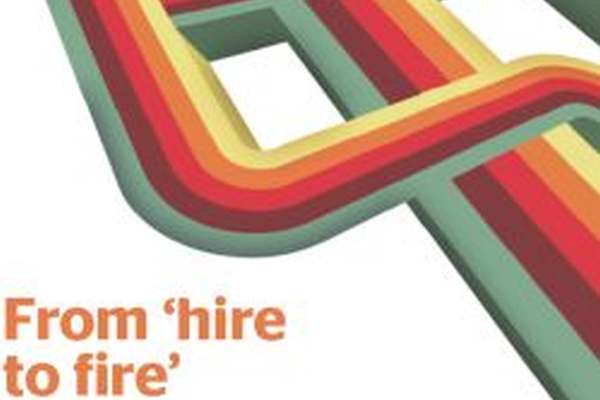Published on the 12/12/2012 | Written by Erin Boyle

Can you accurately account for every employee in your company? How about the management of every individual’s performance, training, objectives and payroll information?…
Unfortunately for many organisations their most important resource, the people, cannot be precisely tracked through the company. And what does that mean for the organisation? Basically any number of problems. As a New Zealand SAP contractor for Oxygen, Tracy Reinecke has seen her fair share of HR departments in all shapes and sizes. “Human resources have really evolved over the past ten or so years. The role of the HR executive has changed tremendously and this is mostly due to globalisation. Companies have employees all over the world, on flexible schedules, in different roles and receiving individual benefits within that environment. “And from an HR personnel perspective, you have to become a detective to manage all of that. To follow every employee’s lifecycle within a business is difficult if you don’t have a system in place, or it is too complex to operate.” There are also many other driving forces that come into play, which place importance on the performance and functionality of the HR department, whether it is one person or a team of 10. It is also about companies moving on from seeing human resources as an administrative role to understanding all the ways it can help with business growth through strategies, employee retention, cost cutting and providing valuable data insights. Also, and perhaps most importantly, employees are asking for it. “Giving control back to employees is real thought leadership in my book,” says David Page, managing director of NorthgateArinso, a global human resource service provider. “The key value of an IT solution is in giving increasing visibility and control to employees who are increasingly IT savvy anyway – often bringing smartphones and iPads to the office either as part of their work or as an adjunct to it. “IT is already altering employees’ way of life and we’re talking about the consumerisation of HR where everyone can access HR services directly, thereby cutting out HR as the ‘middleman’.” Problem areas “One of my biggest professional frustrations is how over-complicated HR processes are. It shouldn’t actually be that complex. Consistency is about ensuring the right terms of employment are constant across all employees and when it comes to accessibility to information, it can be a real problem for any business. “Lastly, affordability. Generally speaking the low-cost solutions are do-it-yourself style offerings and the other end of the scale is the tailored solution, which is very expensive.” So why, in a world where there is an IT application for making everything but your morning coffee, are there so many problems facing HR? Antony Hall, head of talent acquisition and HR systems for Telecom, says it feels as though the profession is really playing catch up with the rest of the inner functions of a business. “What we are heading to is the concept of a complete view of an employee and this means thinking about HR systems in the same way that we treat all other systems in a business. There are so many touch points that HR have with an employee, from before they are even hired, to performance, pay, training and even when they are no longer employees of an organisation. Having all that data is what we want, but we aren’t quite there yet. It sounds easy, but it isn’t exactly simple.” Hall has found varying degrees of flexibility within systems, which can present challenges when integrating different systems. Sometimes their internal resources can chop and change programs for what they require, and other times they need to rely on external support to make adjustments. This can be problematic, especially since up until very recently there hasn’t been a lot of local representation ‘on the ground’ in Australasia. Basically, human resource departments want a tool that allows them to work more effectively and efficiently when managing employees. But Reinecke is quick to point out that while having HR management systems (HRMS) in place is all well and good, organisations need to have the internal capability to manage them. The requirement to support these systems is a major pain point for a lot of people, and although bells and whistles are great, it is a waste of time and money if the system isn’t used to its fullest capabilities. With all these problems highlighted, it is enough for management to jump up straight away and begin the search for the answer in the form of a HRMS, but the best approach is careful and thoughtful planning. Catch-all or point solution? As Telecom’s Hall notes, a lot of organisations have more than likely evolved with HR systems, rather than starting with a well thought through, formulated strategy. He says he is yet to see one program that can offer everything the company requires so his focus is more on integrating their existing systems. “Not one system that I have seen is as good as the parts and systems we have already got. So we use multiple HR systems with our primary platform being SAP. We also use Taleo for recruitment, Cornerstone for training and learning, and Success Factors for performance management. Those are our four key systems and they are at varying levels of integration which we are continuing to develop.” This year Telecom decided to put an emphasis on the IT side of HR. From systems architecture, to short- and long-term road mapping, optimisation, system governance and people capability, they are creating a whole new focus and remit around HR information systems (HRIS). But there are service providers out there that do claim to have the whole ‘hire to fire’ set up, and it is where Ennor is heading with his product MYHR, currently being tested in New Zealand before its roll out in Australia. MYHR works with the ever-increasing cloud portal and it’s an online HR department for small- to medium-sized businesses. Over at Northgatearinso, Page says HR professionals are increasingly looking for systems that just work and, as many HRs have suffered for years with problems across multiple platforms, if a service provider can offer seamless upgrades and integration, then it is possible to work with various programs. “However, HR professionals are already accepting that integration is ‘entry level’; now they are looking to systems which can help them look to the future of the organisation.” Page says HR systems must consider, and work with, the full lifecycle of the employee; the full ‘hire to fire’ scenario and, indeed, they should go further to keep open the prospect of ‘boomerangs’ which is the increasing trend of employees coming back to work with the same business in future. “Talent management is part of HR’s commitment to building the culture that the organisation aspires to. Providing systems which empower employees to take greater control through this cycle is the future. “Successful HR no longer simply looks backwards at how the organisation has performed over the last month or year; it looks forward and adapts accordingly.” Of course, one of the most popular solutions is SAP which Reinecke describes as a system that follows the full human capital management model from assisting with recruitment to crunching the numbers on a final pay and exit interviews. But she also mentions that, based on the size of the organisation, businesses, especially small-to-medium ones, need to look at their requirements as sometimes standalone environments work perfectly fine. “I always say to a client that choosing SAP depends on the level of complexity required around processes. Look carefully at SAP because there are other products that can work perfectly well.” How to choose a system There is also a critical element in analysing your organisation’s ability to change, as the introduction of a new HR solution isn’t just about adopting a new system, but means a requirement for processes and skill sets to adjust to the change, which is where Reinecke often sees problems. “If a company embraces the new IT system and moves with it, usually I find they are quite happy with the product and what it has done for the business. But when the opposite happens – where people are resistant – there are usually bad feelings about the system and clients come back with many issues.” Utopia would be a single, real-time view of an employee where you can gather good data for a variety of outputs, and that is what Antony and Telecom are trying to achieve. As an example, they want to know what recruitment channel an employee came through, what their performance levels are like, their retention and how quickly they have developed. Something like this could show, for example, that employee referrals are the best source of recruitment, as it leads to hiring people who are less likely to leave, perform better and move faster through the organisation. “It’s that kind of data from your systems that allows you to make some snazzy business decisions. So implement systems with reporting in mind. Analysis and insight are a key benefit from outputs that are based on good data.” And of course at the core of most decisions when it comes to implementing an HRMS system is cost, which Reinecke says can be difficult to narrow down. She normally asks companies: As someone who has seen the full cycle of his own career, from human resource management to a developer of an HRMS, Ennor puts it simply when it comes to choosing a solution. “As an HR manager it was my role to ensure we maintain that consistency and accessibility of the right info, while protecting the sensitive information and allowing the business to easily use it, at a decent price.” There are many questions an organisation needs to ask of itself before moving forward with its HR IT systems, and no one solution is right for every business. But the main point coming out of the industry is that companies who haven’t already started thinking strategically about their HR need to do so and soon. Your employees will thank you for it. …
Jason Ennor has been an HR manager in Australia for groups as large as 110,000 people and managed teams as small as three. The issues he has faced are consistent across the board. Ennor says the problems can be categorised into four main areas; ease of use, consistency, accessibility and affordability.
The question now is whether companies need to look for fully integrated systems to use in the organisation, or could they have various solutions set up at points along the way?
For companies who wish to embark on an implementation or upgrade of HRMS solutions there are a lot of choices and service providers out there. But before choosing any system and even approaching companies to pitch to them, the groundwork needs to be done at ‘home’.
































